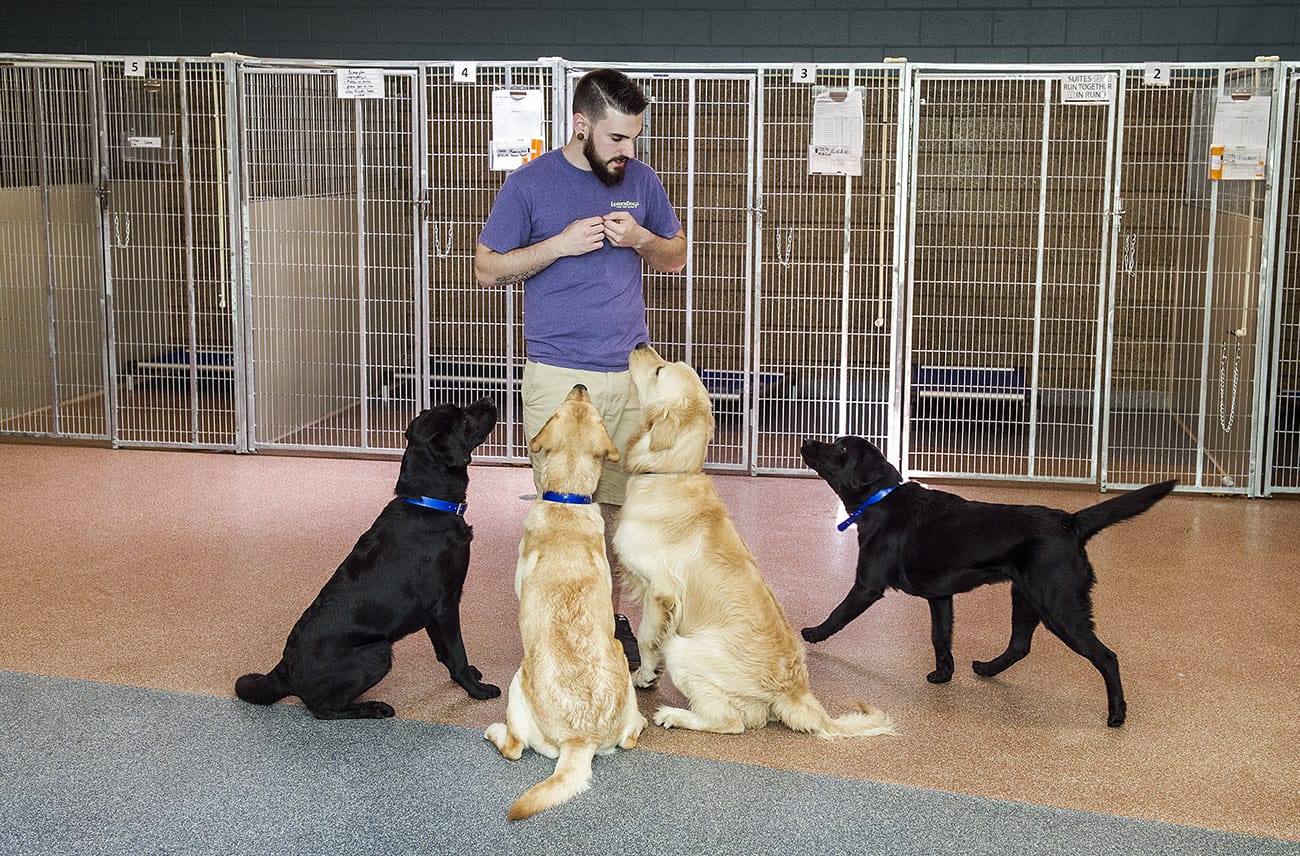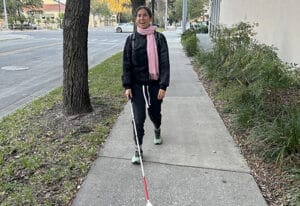
Once Future Leader Dogs are returned to our campus by their puppy raisers, most will live here for four months in the canine development center before graduating to working Leader Dogs. During that time, it’s important that every dog stays happy, healthy and ready to learn the lessons that will allow them to be successful guide dogs. To make sure that happens, we have several groups of people who work and interact with the Leader Dogs-in-training every day.
At any given time, we average between 110–130 dogs in the canine center. During a typical day we have 10 dog care team members, 20 guide dog mobility instructors (GDMIs) and 15 canine support assistant volunteers interacting with our dogs. Each one provides our dogs the maximum amount of interaction time to support their opportunity to become a successful Leader Dog.
Our dog care team members’ normal routine is to feed, medicate, handle, relieve and clean 2–3 villages (average of 25 total dogs) twice per shift. After those tasks are complete, they focus on the dogs’ health, training and enrichment. They take dogs to the vet clinic to check any health concerns, problem solve any concerns that were noticed while caring for individual dogs and spend one-on-one or group enrichment (dog-to-dog interaction) time with the dogs in their villages.
A typical weekday has 20 GDMIs concentrating on providing the 5–8 dogs they are responsible for with progressive guide dog training, such as a 30-minute training in the canine center or taking 3–4 dogs for a half-day training trip to Rochester, Birmingham, Detroit, etc. While the GDMIs focus mainly on training, they also pay close attention to the health, enrichment and care of their dogs.
We have three shifts of canine support assistant (CSA) volunteers every day. Each CSA shift has a dog care team member who guides their shift to provide enrichment time. The current focus for CSA volunteers is to provide one-on-one enrichment time with our dogs. This might be grooming (we have a never-ending supply of fur) or performing TTouch techniques (essentially a form of massage) to calm our dogs. We recently introduced a new opportunity for CSA volunteers to support group enrichment with our dogs.
We also created a new volunteer opportunity, dog transition assistant, with the goal to have 21 shifts (two hours long each) with two volunteers on each shift. The focus of this role is to use relaxation protocols that our puppy raisers have already introduced to our dogs to help them transition into their new environment. An amazing group of puppy raisers helped develop this role that other puppy raisers are now supporting on-campus.
Our dogs receive an amazing amount of interaction every day, and each staff member and volunteer helps to pave the way for another client receiving a well-trained Leader Dog that is ready to become the eyes of someone who’s blind or visually impaired.
Pictured above: Apprentice Guide Dog Mobility Instructor Kevin Guay interacts with some of the dogs in our canine center during a group enrichment session.



